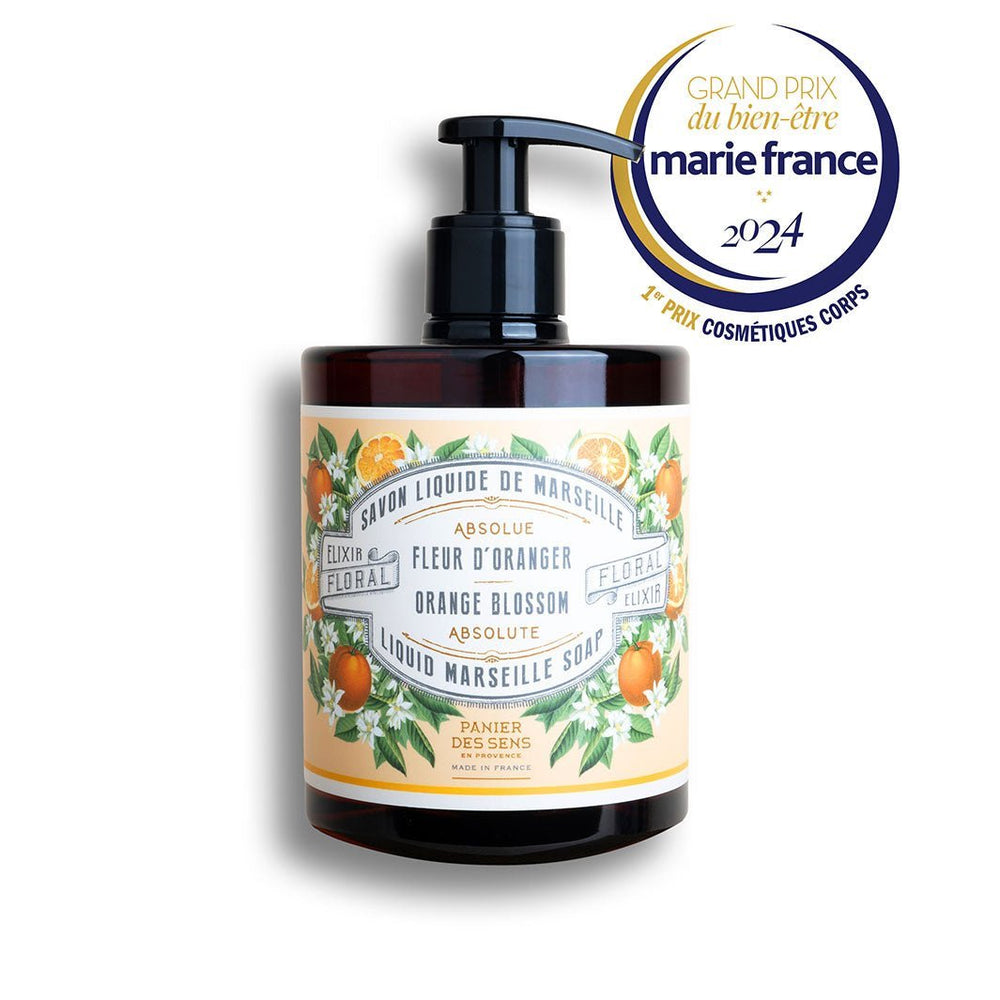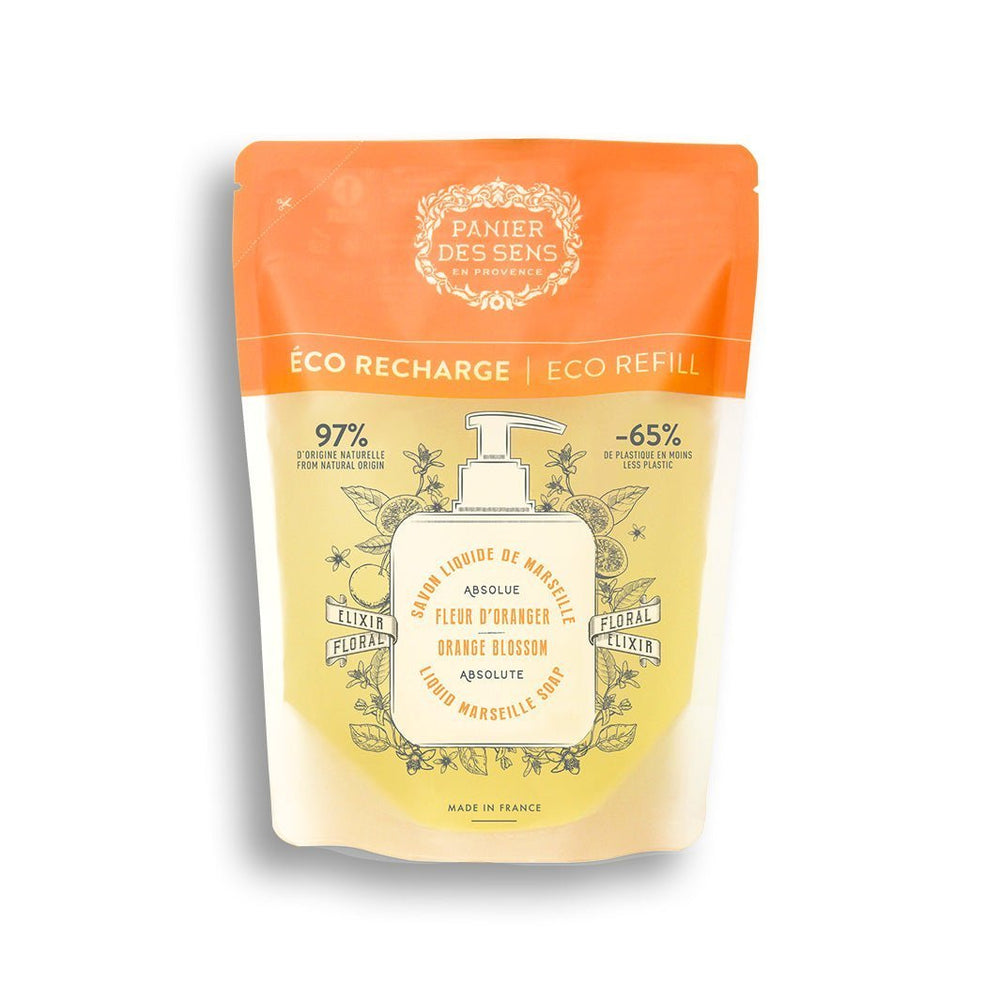How to make a multi-purpose cleaning spray with liquid Marseille soap?
Liquid Marseille soap is a multi-purpose product renowned for its mildness and effectiveness. Natural and eco-friendly, liquid Marseille soap is versatile enough to be used in a variety of household applications. At the top of the list, it lends itself remarkably well to the creation of a multi-purpose cleaning spray, combining practicality with respect for the environment. In this guide, we'll explore how to harness this traditional product forleather care, an effective method for designing your own hand sanitizer, but also its unsuspected role in silver jewelry cleaning. Step by step, we'll show you how to make your own laundry detergent and even a scouring cream. Each method illustrates the capabilities of liquid Marseille soap: the essentials you need to know to cope with a variety of household tasks, while being gentle on the skin and harmless to the environment.

Using liquid Marseille soap for leather care
There's no room for improvisation when it comes to caring for leather goods, as this material is both resistant and delicate. To preserve the sumptuous appearance and longevity of your leather goods, using liquid Marseille soap is an excellent choice. Its natural composition is particularly well-suited to gentle cleaning, while nourishing the leather.
Benefits of Marseille soap for leather
The hypoallergenic formula of liquid Marseille soap is a godsend for sofas, jackets and other leather accessories. It provides impeccable cleanliness without the use of chemicals that could dry out or crack the surface. What's more, its neutral pH respects the integrity of the leather, helping to maintain its suppleness and original color.
Production of a gentle cleansing emulsion
To make your own cleaning solution, simply mix a few drops of liquid Marseille soap in a liter of lukewarm water. This light emulsion will be your ally for regular maintenance, removing traces of use while forming a protective barrier against daily aggressions.
Application technique on leather
Soak a soft sponge or microfiber cloth in the solution, then wring it out so that it is damp but not excessively so. Gently wipe the surface with circular movements. The contact should be soft enough not to mark the leather, but firm enough to effectively remove surface dirt. Allow to dry naturally, or use a second dry cloth to absorb any residual moisture.
This gentle yet rigorous approach ensures that your leather objects will continue to bear witness to their timeless elegance and gracefully endure the years. Periodic maintenance using this simple method will keep your leather accessories as luxurious as the day you acquired them.
How to make a hand sanitizer with liquid Marseille soap?
In an age when hand cleanliness has become a priority, it's essential to have an effective, skin-friendly disinfectant. Liquid Marseille soap, with its cleansing virtues and natural composition, lends itself perfectly to making a homemade hand sanitizer. This invaluable daily ally is not limited to personal hygiene, but also proves to be an excellent component in the fight against germs and bacteria. If you're wondering how to make a hand sanitizer using liquid Marseille soap, the answer lies in a few simple steps.
Home disinfectant composition
To make your own hand sanitizer, liquid Marseille soap will be the centerpiece of your recipe. Be sure to gather the following ingredients:
- 200 ml pure liquid Marseille soap;
- 100 ml of alcohol at 70° or higher, known for its antiseptic properties;
- 10 ml vegetable glycerin, which will provide a welcome moisturizing effect;
- To add fragrance and reinforce the antibacterial action, consider adding twenty drops of essential oil such as tea tree or eucalyptus.
Step-by-step manufacturing
Pour the liquid Marseille soap into a clean bowl. Gradually add the alcohol, stirring gently to avoid unnecessary foaming. Add the vegetable glycerin and stir until a uniform consistency is obtained. If you've chosen to use essential oils, this is the ideal time to incorporate them carefully.
Bottling and optimal use
When your preparation is homogeneous, carefully transfer it to a pump bottle or other suitable container for easy dosage. This practical presentation makes it easy to apply, while preserving the quality of the disinfectant.
To sanitize your hands with this natural disinfectant, squeeze a small amount onto your palms and rub them together until the product has evaporated completely. It's important not to rinse or dry your hands immediately after use, to allow the active ingredients, particularly the alcohol, to fully exert their antibacterial action.
This homemade disinfectant is perfectly suited to adults and teenagers concerned with both hygiene and skin respect. However, its formula contains powerful active ingredients such as alcohol, so it should be used with caution by children and people with sensitive or reactive skin. A skin test may be advisable before regular use.
How can liquid Marseille soap help to clean silver jewelry?
The original shine of silver jewelry can fade over time, giving way to a less desirable patina. Fortunately, liquid Marseille soap is an excellent cleaning agent for bringing these precious accessories back to life. Its natural composition and intrinsic gentleness make it the ideal choice for pampering your jewelry without damaging it.
The benefits of Marseille soap for your money
Known for its neutral pH and vegetable-oil-rich formula, liquid Marseille soap is particularly well-suited to the delicate cleaning of precious metals. It effectively removes dirt and traces of oxidation without damaging or scratching the surface. What's more, it contains no corrosive chemicals that could tarnish or damage silver.
Making a jewelry cleaning solution
To prepare your cleaning solution, simply mix a small amount of liquid Marseille soap in a bowl of lukewarm water. Soak your jewels for a few minutes in this mixture before brushing them lightly with a soft bristle brush or delicate cloth. This method not only removes dirt, but also helps restore the natural lustre of silver pieces.
Drying precautions
After rinsing your jewelry thoroughly, it's crucial to use a clean, dry cloth to absorb any remaining moisture. This will prevent the formation of stains or the appearance of corrosion on your precious objects. Proper drying is essential to maintain shine and prevent future damage caused by water or other residues.
This respectful approach ensures that your silver treasures continue to sparkle as they did on day one, while prolonging their durability and timeless beauty. With liquid Marseille soap, you have a versatile tool capable of tackling a variety of everyday challenges, including the meticulous care of silver jewelry.
How to make a laundry detergent with liquid Marseille soap?
There seems to be some confusion, as the requested section is already written in the information provided. Please clarify if you require additional writing for this section or another part of the page plan not mentioned in the context given. However, for those interested, it's worth noting that you can learn more about the method and benefit from age-old know-how using natural methods. So, to find out how to make laundry detergent from liquid Marseille soap, remember that making your own detergent is both a form of practical self-reliance and an authentic tribute to the practices of yesteryear.
How to make a scouring cream with liquid Marseille soap?
Faced with stubborn stains and encrusted residues, the quest for an effective, environmentally-friendly cleaning solution is often fraught with difficulties. Fortunately, liquid Marseille soap is a key ingredient in a scouring cream that's as gentle on the planet as it is effective against dirt.
Necessary components
To prepare this magic household potion, here's what you'll need:
- Baking soda: known for its natural abrasive properties, it removes stains without damaging surfaces.
- Liquid Marseille soap: this age-old elixir serves as a binding agent and cleans with legendary gentleness.
- Hot water: this is used to adjust the consistency of your cream so that it is perfectly manageable.
Alchemical process
In a modern cauldron (or simply a bowl), carefully combine the baking soda with the liquid Marseille soap. Gradually add the hot water while stirring until the mixture takes on the consistency of a rich, creamy paste. The texture should be consistent enough to adhere to vertical walls without dripping miserably.
The art of scouring
This prodigious cream can be used on stainless steel sinks, worktops and wall tiles. Apply generously to the surface to be treated, using a sponge or brush adapted to the level of abrasion required. Scrub with love, then rinse thoroughly with clean water to reveal all the splendor hidden beneath everyday residues.
To preserve this precious household ally, store it in an airtight container like a sealed grimoire and use it within two weeks to fully benefit from the enchanting powers of liquid Marseille soap.
We recommend these other pages:






































